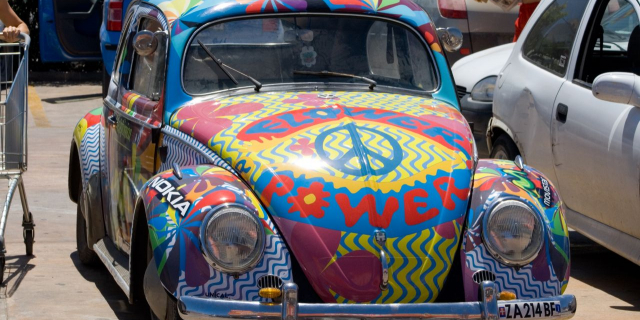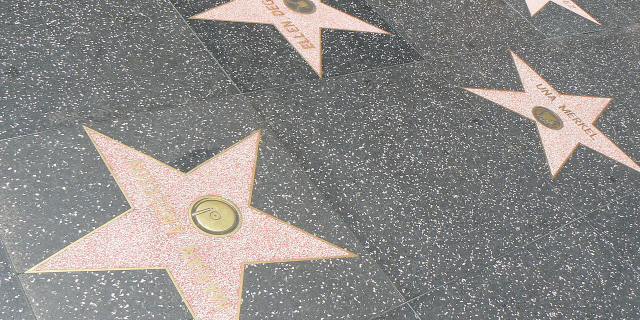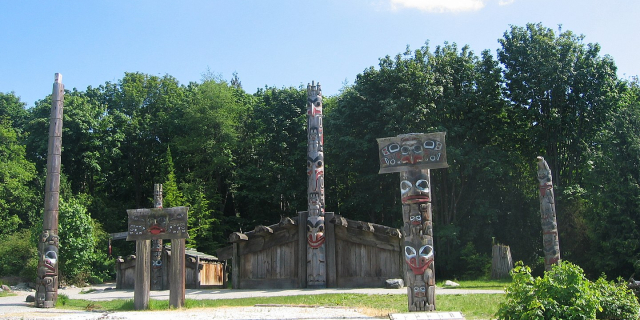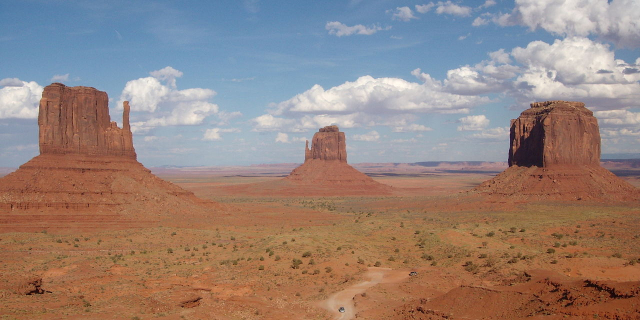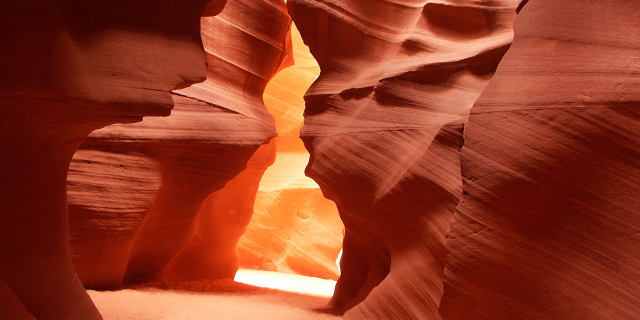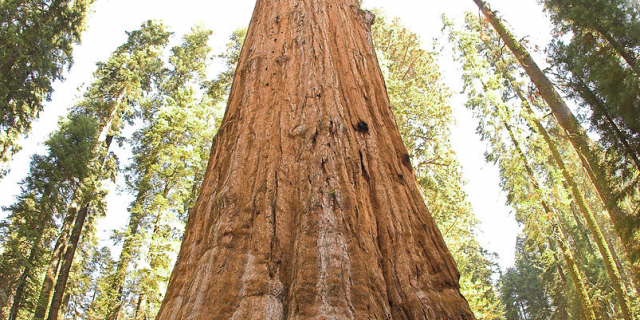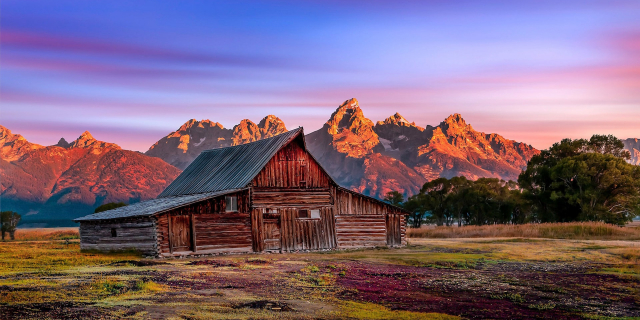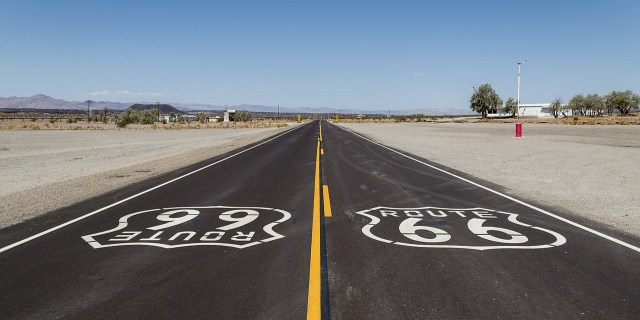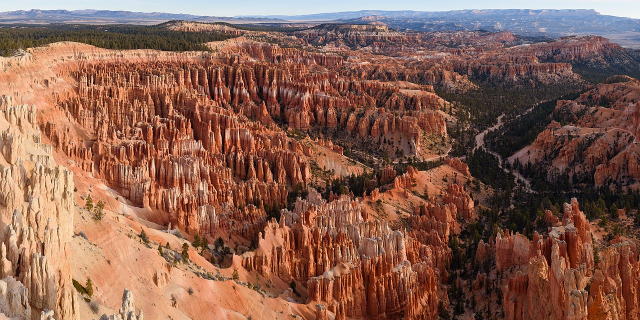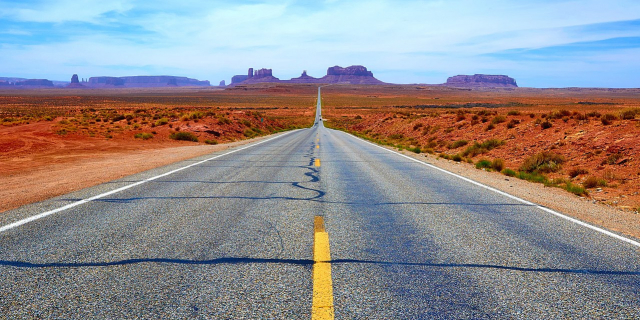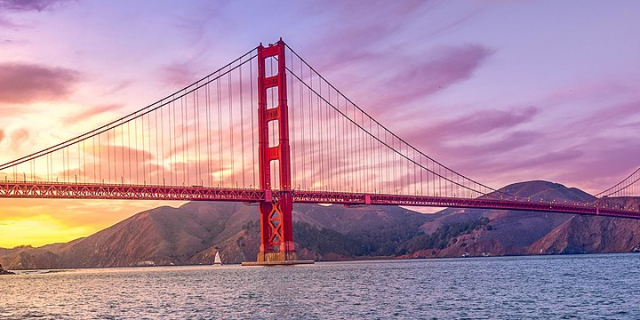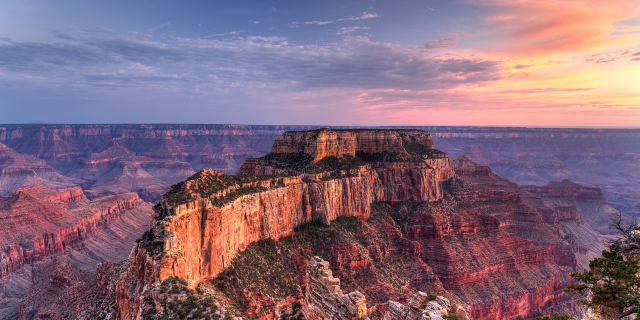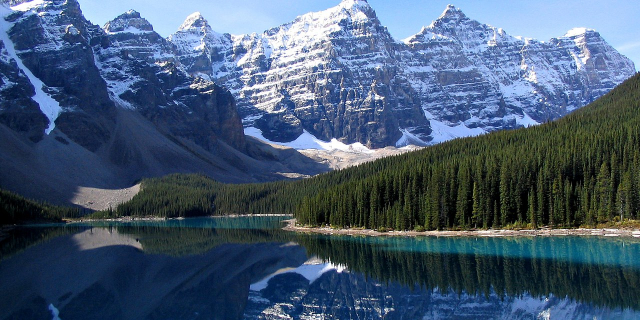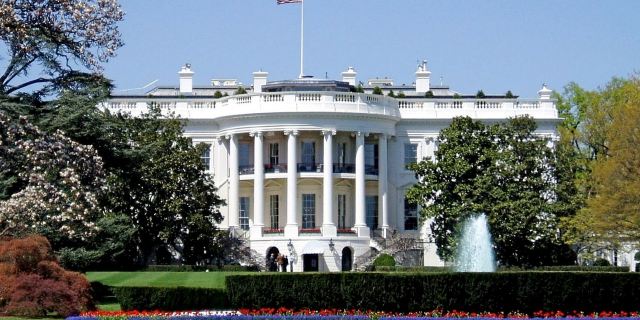Western United States
Context of Western United States
The Western United States (also called the American West, the Far West, and the West) is the region comprising the westernmost U.S. states. As American settlement in the U.S. expanded westward, the meaning of the term the West changed. Before around 1800, the crest of the Appalachian Mountains was seen as the western frontier. The frontier moved westward and eventually the lands west of the Mississippi River were considered the West.
The U.S. Census Bureau's definition of the 13 westernmost states includes the Rocky Mountains and the Great Basin to the Pacific Coast, and the mid-Pacific islands state, Hawaii. To the east of the Western United States is the Midwestern United States and the Southern United States, with Canada to the north, and Mexico to the south.
The West contains several major biomes, including arid...Read more
The Western United States (also called the American West, the Far West, and the West) is the region comprising the westernmost U.S. states. As American settlement in the U.S. expanded westward, the meaning of the term the West changed. Before around 1800, the crest of the Appalachian Mountains was seen as the western frontier. The frontier moved westward and eventually the lands west of the Mississippi River were considered the West.
The U.S. Census Bureau's definition of the 13 westernmost states includes the Rocky Mountains and the Great Basin to the Pacific Coast, and the mid-Pacific islands state, Hawaii. To the east of the Western United States is the Midwestern United States and the Southern United States, with Canada to the north, and Mexico to the south.
The West contains several major biomes, including arid and semi-arid plateaus and plains, particularly in the American Southwest; forested mountains, including three major ranges, the Sierra Nevada, the Cascades, and Rocky Mountains; the long coastal shoreline of the American Pacific Coast; and the rainforests of the Pacific Northwest.
More about Western United States
- History
 Early Native American tribal territories
Early Native American tribal territoriesThe Western United States has been populated by Native Americans since at least 11,000 years ago, when the first Paleo-Indians arrived. Pre-Columbian trade routes to kingdoms and empires such as the Mound Builders existed in places such as Yellowstone National Park since around 1000 AD. Major settlement of the western territories developed rapidly in the 1840s, largely through the Oregon Trail and the California Gold Rush of 1849. California experienced such a rapid growth in a few short months that it was admitted to statehood in 1850 without the normal transitory phase of becoming an official territory.[1]
One of the largest migrations in American history occurred in the 1840s as the Latter Day Saints left the Midwest to build a theocracy in Utah.
Both Omaha, Nebraska and St. Louis, Missouri laid claim to the title, "Gateway to the West" during this period. Omaha, home to the Union Pacific Railroad and the Mormon Trail, made its fortunes on outfitting settlers; St. Louis built itself upon the vast fur trade in the West before its settlement.
The 1850s were marked by political battles over the expansion of slavery into the western territories, issues leading to the Civil War.[2]
...Read moreHistoryRead less Early Native American tribal territories
Early Native American tribal territoriesThe Western United States has been populated by Native Americans since at least 11,000 years ago, when the first Paleo-Indians arrived. Pre-Columbian trade routes to kingdoms and empires such as the Mound Builders existed in places such as Yellowstone National Park since around 1000 AD. Major settlement of the western territories developed rapidly in the 1840s, largely through the Oregon Trail and the California Gold Rush of 1849. California experienced such a rapid growth in a few short months that it was admitted to statehood in 1850 without the normal transitory phase of becoming an official territory.[1]
One of the largest migrations in American history occurred in the 1840s as the Latter Day Saints left the Midwest to build a theocracy in Utah.
Both Omaha, Nebraska and St. Louis, Missouri laid claim to the title, "Gateway to the West" during this period. Omaha, home to the Union Pacific Railroad and the Mormon Trail, made its fortunes on outfitting settlers; St. Louis built itself upon the vast fur trade in the West before its settlement.
The 1850s were marked by political battles over the expansion of slavery into the western territories, issues leading to the Civil War.[2]
Between 1863 and 1869, North America's first transcontinental railroad was constructed to connect the eastern US with the Pacific coast. The resulting railroad connection revolutionized the settlement and economy of the American West by making the transportation of passengers and freight quicker, safer, and cheaper.
 The first transcontinental railroad played a pivotal role in the history of the Western United States.
The first transcontinental railroad played a pivotal role in the history of the Western United States.The history of the American West in the late 19th and early 20th centuries has acquired a cultural mythos in the literature and cinema of the United States. The image of the cowboy, the homesteader, and westward expansion took real events and transmuted them into a myth of the west which has shaped much of American popular culture since the late 19th century.[3]
Writers as diverse as Bret Harte and Zane Grey celebrated or derided cowboy culture, while artists such as Frederic Remington created western art as a method of recording the expansion into the west. The American cinema, in particular, created the genre of the western movie, which, in many cases, use the West as a metaphor for the virtue of self-reliance and an American ethos. The contrast between the romanticism of culture about the West and the actuality of the history of the westward expansion has been a theme of late 20th and early 21st century scholarship about the West. Cowboy culture has become embedded in the American experience as a common cultural touchstone, and modern forms as diverse as country and western music have celebrated the sense of isolation and independence of spirit inspired by the frontiersmen on "virgin land".[4]
20th century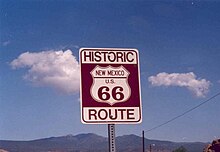 U.S. Route 66 accelerated the development of the Western United States.
U.S. Route 66 accelerated the development of the Western United States.The advent of the automobile enabled the average American to tour the West. Western businessmen promoted Route 66 as a means to bring tourism and industry to the West. In the 1950s, representatives from all the western states built the Cowboy Hall of Fame and Western Heritage Center to showcase western culture and greet travelers from the East. During the latter half of the 20th century, several transcontinental interstate highways crossed the West bringing more trade and tourists from the East. Oil boom towns in Texas and Oklahoma rivaled the old mining camps for their rawness and wealth. The Dust Bowl forced children of the original homesteaders even further west.[5]
The movies became America's chief entertainment source featuring western fiction, later the community of Hollywood in Los Angeles became the headquarters of the mass media such as radio and television production.[6]
California has emerged as the most populous state and one of the top 10 economies in the world. Massive late 19th–20th century population and settlement booms created two megalopolis areas of the Greater Los Angeles/Southern California and the San Francisco Bay Area/Northern California regions, one of the nation's largest metropolitan areas and in the top 25 largest urban areas in the world. Five more metropolitan areas of San Bernardino-Riverside, San Diego, Denver, Phoenix, and Seattle have over a million residents, while the three fastest growing metro areas were the Salt Lake City metropolitan area, the Las Vegas metropolitan area; and the Portland metropolitan area.[7][8]
Since the mid-1970s, historians of the West have emphasized the World War II years as a major watershed, as a region experienced enormous social and economic change, and became the pacesetter for societal evolution. The population soared, especially in metropolitan areas, as a result of massive expansion of the manufacture of airplanes, ships and munitions and of military and Naval training facilities. California upgraded universities to world-class status, intensified scientific research, and expanded infrastructure. After the war millions more migrated using the GI Bill to buy suburban homes, many of them recalling rewarding wartime experience in military training facilities. The region had always been more democratic with greater racial and gender equality, and continued as a national pacesetter in modernization. New problems emerged, especially environmental issues where westerners took the lead in areas such as the allocation of scarce water resources as well as dealing with smog and air pollution. More recently historians have looked at nuances, pointing out that some of the trends began before 1941.[9]
Los Angeles has the largest Mexican population outside of Mexico, while San Francisco has the largest Chinese community in North America and also has a large LGBT community, and Oakland, California has a large percentage of residents being African-American, as well as Long Beach, California which also has a significant black community. The state of Utah has a Mormon majority (estimated at 62.4% in 2004),[10] while some cities like Albuquerque, New Mexico; Billings, Montana; Spokane, Washington; and Tucson, Arizona are located near Indian reservations. In remote areas there are settlements of Alaskan Natives and Native Hawaiians.
^ H. W. Brands, The Age of Gold: The California Gold Rush and the New American Dream (2002) ^ Michael Morrison, Slavery and the American West: The Eclipse of Manifest Destiny and the Coming of the Civil War (1997) ^ Gary J. Hausladen, Western Places, American Myths: How We Think About The West (U. of Nevada Press, 2006) ^ Henry Nash Smith, Virgin Land: The American West as Symbol and Myth (Harvard University Press, 1950) ^ Donald Worster, Dust bowl: the southern plains in the 1930s (Oxford University Press, 1982) ^ Allen John Scott, On Hollywood: The place, the industry (Princeton University Press, 2005) ^ Larsen, Lawrence H. (1978). The Urban West at the End of the Frontier. Univ Pr of Kansas. ISBN 978-0700601684. ^ Earl Pomeroy, American Far West in the Twentieth Century (Yale University Press, 2008) ^ Mark Brilliant, and David M. Kennedy, eds., World War II and the West It Wrought (Stanford University Press, 2020) pp 1-3, 179-80.. excerpt. ^ Canham, Matt (July 24, 2005). "Mormon Portion of Utah Population Steadily Shrinking". The Salt Lake Tribune. Retrieved February 23, 2012.




